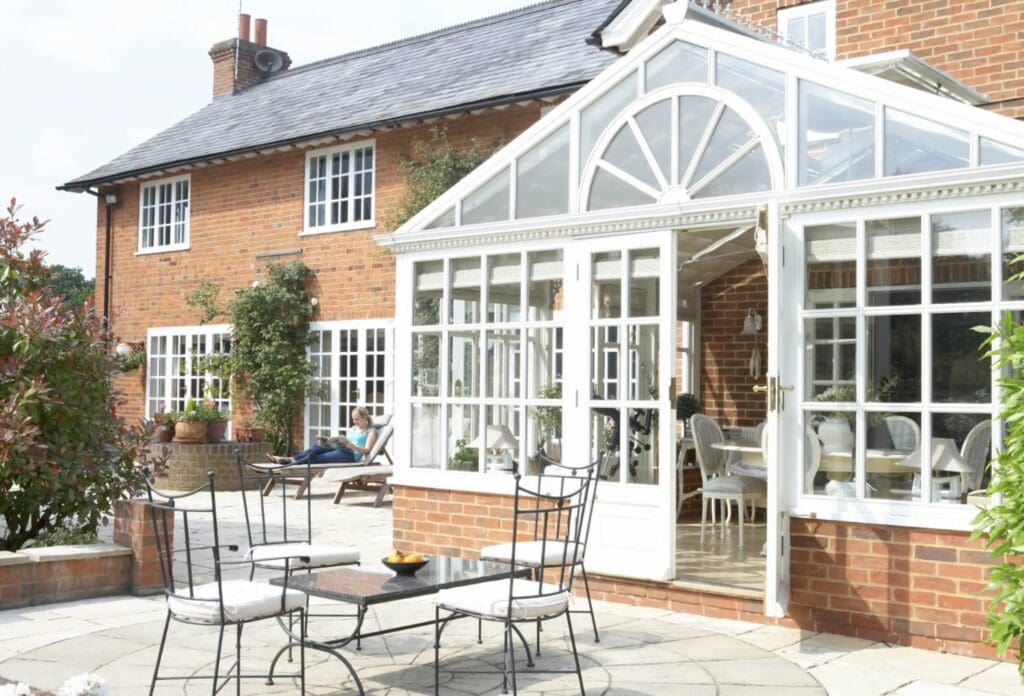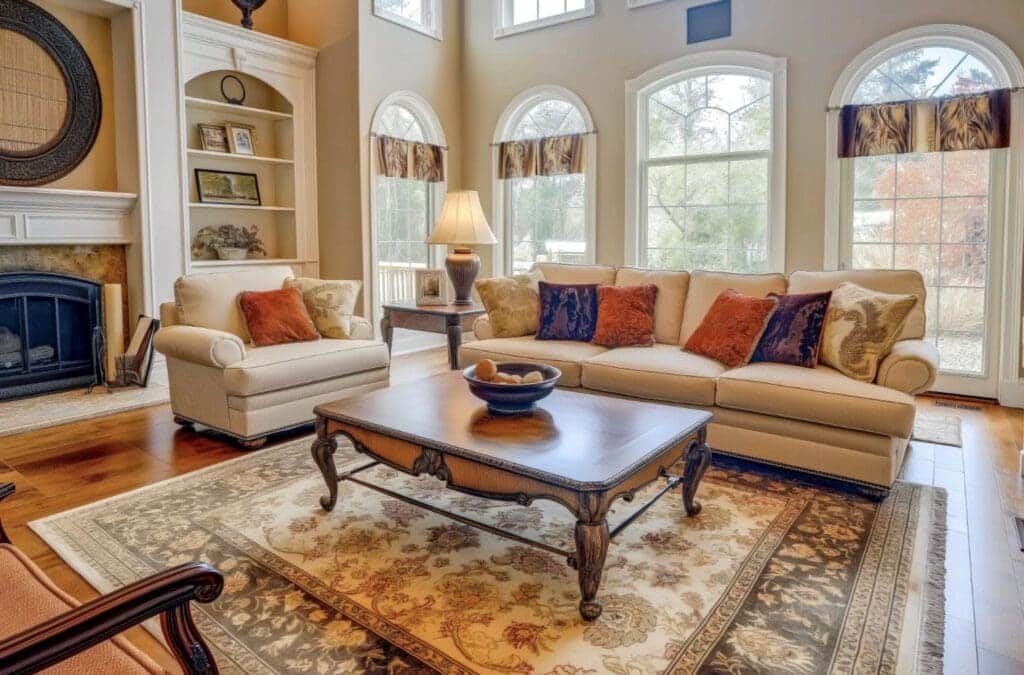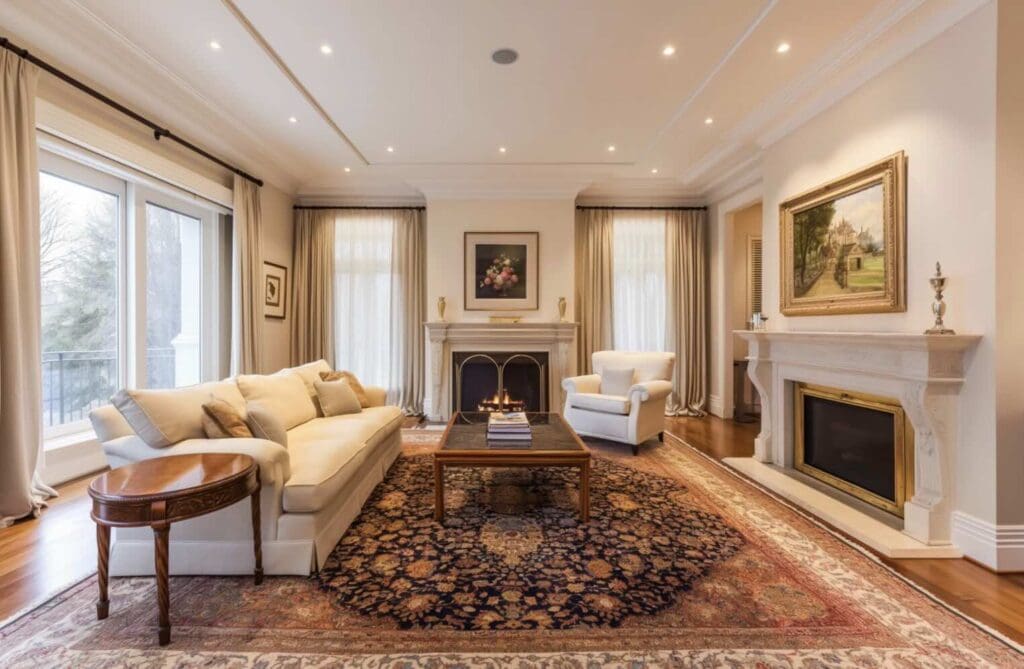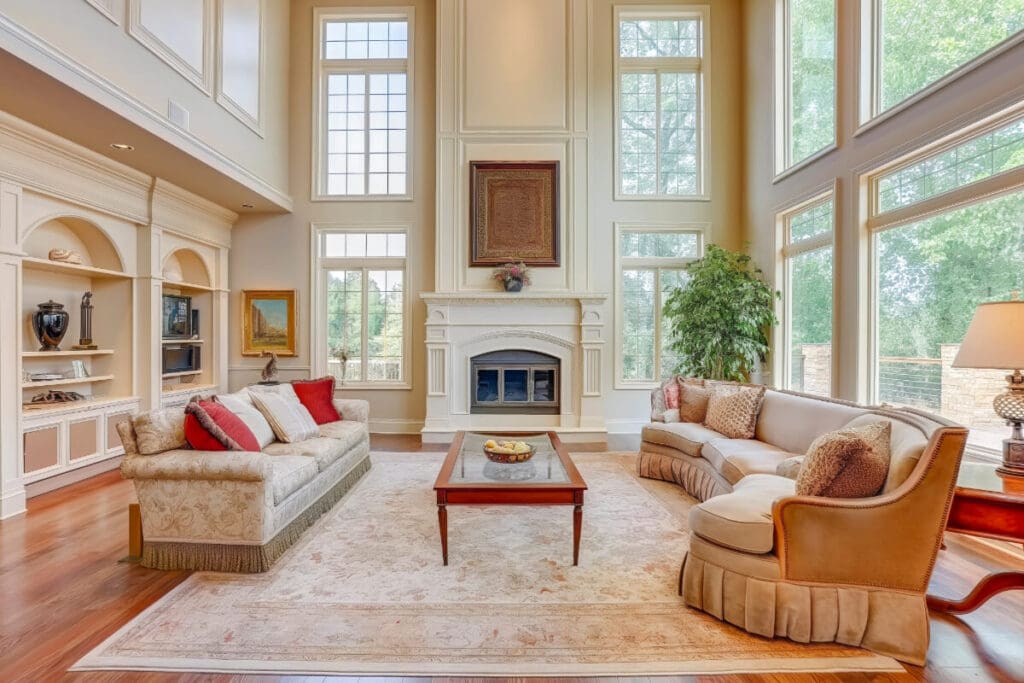The 1920s, an era of prosperity and cultural advancement, was primarily defined by the Art Deco movement, significantly influencing interior design trends. From how homes were styled to the grandeur of public spaces, the geometry and streamlined forms intrinsic to the movement were reflected in almost every design aspect.
This blog delves into the principles and aesthetics of the Art Deco movement, its impact on 1920s interior design, and how it powerfully shaped the design ethos of the epoch. The distinctive elements that characterize 1920s interior design, including lavish materials, meticulous details, and the strategic use of fixtures, are examined. It explores a bygone era that continues to inspire contemporary design and style.
Table of Contents
- Influence of the Art Deco Movement on 1920s Interior Design
- Signature Elements of 1920’s Interior Design
- Adaptation of 1920’s Design in Modern Interiors
- Famous Interior Designers of the 1920s
- Related Content
Influence of the Art Deco Movement on 1920s Interior Design
When it comes to design and style, there’s no period quite as dynamic as the Jazz Age, more commonly known as the 1920s. A time of expression and expansion, this era saw a burst of creativity and innovation from all quarters, starting in Paris and swiftly reaching the entire world. One of the movements that made a vast impact during this era was none other than Art Deco, a design philosophy that left a robust imprint on the world of interior design.
Art Deco, short for Arts Decoratifs, came from the 1925 Exposition Internationale des Arts Decoratifs et Industriels Modernes. It was a style that broke away from traditional constraints and celebrated the spirit of modernity. Art Deco epitomizes opulence and glamour, a unique blend of many styles and movements, including Cubism, Neoclassicism, and Futurism.
The 1920s was when people yearned for a touch of elegance and luxury in their lives. This longing was adequately reflected in their living spaces, which embraced the rich, flamboyant approach offered by Art Deco. It was all about impact! The visual drama took center stage, with bold geometric patterns, high-contrast color schemes, and oversized artwork stealing the spotlight. This era demonstrated that a room should be more than just a space; it should convey a sense of the individual, style, and, most importantly, of the times.
Art Deco found its expression in contrasting colors, vivid hues, and bold lines. Silk, velvet, lacquer, inlaid wood, and chrome were preferred materials, each promising a sense of sophistication. Luxury materials such as ivory, jade, and Murano glass were also lavishly used, adding to the opulence.
Art Deco’s impact also meant that the entire house, not just public spaces like living and dining rooms, received the touch of glitz. From grand chandeliers in the entryway to ornate mirrors in powder rooms, every space bore the hallmarks of Art Deco’s glamour. Richly designed rugs, streamlined furniture, and geometric wallpapers appeared everywhere, a significant departure from the past’s stuffy, heavily ornamented designs.
Moreover, functionality and design found a welcome balance during the Art Deco period. Housing developments of the time incorporated the aesthetics of Art Deco into their design while ensuring the optimal use of space. This was achieved with the adoption of integrated furniture and the intelligent arrangement of objects, contributing to the “modern” feel of the era.
Teeming with forward-looking enthusiasm and a taste for the exotic, Art Deco took the 1920s by storm, seizing the imagination of a generation eager to grasp the future. This unapologetically bold and luxurious design style engrained itself so deeply into the fabric of the time that, nearly a century later, Art Deco continues to captivate with its enduring magic. The 1920s may have been the dawn of the Art Deco movement, but its influence has endured, shaping the course of design philosophy for decades. It’s an artistic testament to a time of transformation and the enduring power of good design.

Signature Elements of 1920’s Interior Design
Unlocking Aesthetics: Key Elements of Interior Design in the 1920s
In a remarkable splash of vibrant hues and distinctive patterns, the 1920s forged an unforgettable path in the annals of interior design. Drawing energy and magic from the Jazz Age’s unstoppable rhythm, this era’s design aesthetics danced to a poignant symphony of creativity that can still be felt alive in many spaces today.
To compose a true masterpiece among this sea of inspiration, let’s plunge deeper into certain key aspects that defined interior design in the Roaring Twenties, beyond Art Deco, and brought a nuanced aesthetic to life.
A Palette of Glamour
A shift was palpable in the tonal creativity that began to shine across homes throughout the 1920s, steering away from the mainstay Art Deco staples. Fresh, jubilant color combinations arose, vying for attention against more traditional shades. Rich and deep emerald, regal gold, luxurious black, and a bold scarlet were just a few that wove into the interior design fabric. These dramatic hues didn’t just make a statement; they sang a melody of lavish opulence, reconfirming the message of the Jazz Age.
Geometric Command
The 1920s heralded an era of geometry and structure, a departure from previous eras’ soft, flowing lines. Interiors began to mirror the modernist movements in art, borrowing their playful explorations of form and space. Straight lines, bold stripes, and geometric patterns clung to walls, objects, and fabrics, filling homes with a certain rhythm that resonated with the dynamic culture of the time.
The Dance of Textiles
Textile design, like the music of this era, was packed with vibrant improvisations. The zigzags of chevrons, the allure of flamingo motifs, and the boldness of diamond patterns each danced its rhythm, asserting its voice. From wall coverings to upholstery, clashing patterns and textures intermingled in theatrical harmony, contributing to an evocative narrative of the 1920s design.
Rapture in Repetition
Repetition, a character in itself, wove into the DNA of the 1920s design. Motifs recurring in wallpaper, curtain designs, and upholstery created a sense of rhythm and flow. This design element provided stability amidst exuberant colors and bold patterns.
The Glint of the Golden Age
And how could one forget the spell of the chrome and glass often seen in Art Deco designs? The 1920s saw a rise in the use of these shiny materials and metallic finishes. Brass, mirrors, lacquered furniture, and inlaid wood brought an element of luxe and glamour to interiors, reflecting the optimism and affluence of the golden age.
The Song in Sunbursts
An honorable mention goes to the sunburst, one of the most identifiable aesthetic elements. A common motif in mirrors, clocks, and wall accessories, the sunburst was a radiant symbol of the dawn of a new era, capturing the essence of hope, positivity, and brightness that infused the 1920s.
In studying the ever-vibrant 1920s design, we are treated to examine aesthetics and a deep, sonorous testimony to the spirit of a decade renowned for its ferociously burning desire for freedom, fun, and sheer glamor. It was an aesthetic odyssey that carved a breathtaking path in the soil of interior design, a journey that we continue to celebrate today and hope to keep celebrating in the years to come.

Adaptation of 1920’s Design in Modern Interiors
In the spirited dance of design, one cannot ignore the twirl and sway of the Roaring ’20s—a vibrant era that gave birth to an eclectic blend of glamour, luxury, and functionality. Art Deco, the star of this design revival, makes the 1920s a timeless muse for designers. Today, nostalgia and innovation step together on the design floor. With a nod to our past, let’s explore how today’s style spaces continue to twirl in the rhythm of the 1920s.
The exquisite Art Deco palette enchants us in stylish living rooms and sparkling hotel lobbies. A beguiling blend of contrasts and rich hues is ingeniously used in today’s interiors. The cool sheen of silver combined with the warmth of brass, the bold meeting of black and white, and the seduction of jewel tones reveal the glamour of the 1920s.
The 1920s design saw a f of symmetry and geometrical patterns. The zing of zigzags, the allure of arcs, and the charm of chevrons conquered interior spaces. Today’s living rooms, bathrooms, and dining spaces celebrate this geometric command. A bathroom floor dotted with hexagonal tiles, a dining table with synchronized angular patterns, or a statement wall reflecting the glamour of geometric command – the whisper of Art Deco echoes everywhere.
The 1920s saw a dance of textures and patterns. Velvet made a grand entry, and it was love at first sight. Designers today are rekindling this love story by creatively balancing textures and patterns. A monochrome rug against a velvet couch, the softness of a wool throw meeting the rugged beauty of leather – these spaces sing the tales of the Jazz Age.
Repeating elements in design create a rhythm; in the 1920s, this was a rhapsody in architecture. Today, we are falling in love again with this rhythmic allure. The repetitive use of tiles in a bathroom, the periodic pattern on wallpaper, or a series of identical lamps hanging from the ceiling—they all gesture towards the Art Deco love of uniformity.
Further, the golden age of design resurrected the allure of metallics, particularly gold, in the 1920s. Today’s spaces have not lost this golden touch. Gold-rimmed mirrors, brass fixtures, or a shimmering antique gold chandelier owe their sparkle to the Golden Age.
Lastly, the sunburst motif, quintessential to 1920s Art Deco design, is seeing a reprise. Whether in elegant mirrors that radiate like the sun, wall art that glows in sunburst beauty, or cabinets adorned with sunburst motifs, this design element keeps alive the creative spirit of the 1920s within modern spaces.
The timeless allure of the 1920s is not simply nostalgia. It’s a modern roar of the far-sighted visionaries of a bygone era. As we explore more, we see its echoes in our spaces today, making every corner of our home a beautiful ode to the Jazz Age. The 1920s design is not just a history page – it is the song that continues to play, guiding our steps on the dance floor of design.

Famous Interior Designers of the 1920s
Unveiling the Maestros of 1920s Interior Design: Icons of Glamour and Geometry
Immersed in the electrifying roar of the 1920s, it’s no surprise that an explosion of creativity and innovation in interior design followed. Adorned with fresh, intoxicating concepts, let’s dive into the influential figures of the time who painted the decade with their design conquests.
The name Émile-Jacques Ruhlmann evokes French luxury. Regarded as Art Deco’s poster child, Ruhlmann embodied 1920s elegance and refinement. His designs were enthroned as paradigms of tasteful decadence, exemplifying the blend of traditional craftsmanship, exotic materials, and innovative forms associated with Art Deco.
The limelight would also shine brightly on Irish designer and architect Eileen Gray. Her revolutionary approach to design flew in the face of convention and ushered in a new era for domestic spaces. Gray’s daring use of geometric forms showcased the characteristic order and symmetry of Art Deco, accentuating the drama in functionality.
Across the Atlantic, the daring Dorothy Draper painted the town, no, whole buildings, red, turquoise, and every color under the sun. Labeled by leading design publications as “America’s Most Fabulous Decorator,” Draper’s designs embodied the spirit of the Jazz Age. Ever ready for a spin-off of conventional norms, Draper showcased bold strokes, stunning contrasts, and dramatic patterns, like her trademark cabbage-rose chintz.
Then, there’s Jean-Michel Frank, the Parisian designer acclaimed for his minimalist style, contrasted with lush fabrics and extravagant finishes. Frank opened a new chapter for texture by mixing fabrics like silk and velvet. His oeuvre draped the Jazz Age in luxury, with daring but subtle geometric motifs emitting a chic charm.
The virtuosic Syrie Maugham from England danced to her tune in the symphony of Art Deco. Discarding the notion of full-room motifs, she introduced the concept of the ‘all-white room.’ Her designs evoked anticipation, wonder, and delight, like reading a thrilling novel or relishing a fine meal.
Nollekins Trojan’s legacy shimmers with hints of gold and metallic accents. She indulged uncompromisingly in the luxe expressions of the 1920s Art Deco. Her iconic metal sunburst mirror remains an enduring symbol of the era, providing resonance with contemporary spaces.
In essence, the 1920s sparked a creative revolution, sowing the seeds for a future that was as vibrant as it was varied. Through their daring and original designs, these influential figures enabled the Art Deco movement to reflect the spirit of the epoch, ingraining it in the zeitgeist of the time and assuring its touching influence on modern aesthetics.

As we traverse the web of time, the influence of 1920s interior design remains palpable, resonating in the spaces we adorn today. The era’s enduring relevance is a testament to the ingenuity of the Art Deco movement, which shaped the faces and interiors of buildings.
Furthermore, the audacity and vision of the designers of the 1920s hold lessons for today’s artists and creatives, acting as beacons of innovation and boldness. The fusion of modern style with the grandeur of the 20’s interior design creates an intriguing amalgamation, bridging the past and present and nurturing the unending cycle of design evolution. Let this serve as a recognition and salute to the timeless beauty and influence of 1920’s interior design.
If you are interested in seeing how Mondoro can be a valuable partner for you for wood furniture products – we would love to talk to you to see how we can help you.
Find out more about how Mondoro can help you create, develop, and manufacture excellent home decor and home furniture products – don’t hesitate to contact me, Anita. Check out my email by clicking here or become a part of our community and join our newsletter by clicking here.
Mondoro gives out a FREE Lookbook to anyone interested. You can receive a copy of our latest Lookbook by clicking here.
Listen to our Podcast called Global Trade Gal. You can find it on all major podcast platforms. Try out to listen to one of our podcasts by clicking here.
Subscribe to our Mondoro Company Limited YouTube Channel filled with great videos and information by clicking here.
Related Content
What Is Algum Wood? And Other Biblical Facts
Algum wood is a wood that was referred to in the Bible that King Solomon used to build his temple. We know that King Solomon would have used the finest materials to build this temple, so Algum wood was likely a very special and expensive wood.
You can discover more by reading What Is Algum Wood? And Other Biblical Facts by clicking here.
Difference Between Solid Sheesham Wood, And Teak Wood
Solid Sheesham Wood and Teak Wood are both very different kinds of woods. Even though they are both considered hardwoods, Sheesham wood is a softer wood than teak. Sheesham wood is also considered less durable than teak wood. Many premier manufacturers consider teak wood the ”king of woods.”
You can discover more by reading our blog Difference Between Solid Sheesham Wood, And Teak Wood by clicking here.
What Are The Types Of Wood Used In Furniture?
Wood for furniture is divided up into hard and softwood. Though the woods have some similarities, they also have some differences. Different looks and types of furniture may require a certain kind of wood. Some wood species will be higher priced, and others will be cheaper; price, durability, look, color, finish, and structure can decide what wood to choose for your furniture piece.
You can discover more by reading our blog What Are The Types Of Wood Used In Furniture? by clicking here.

